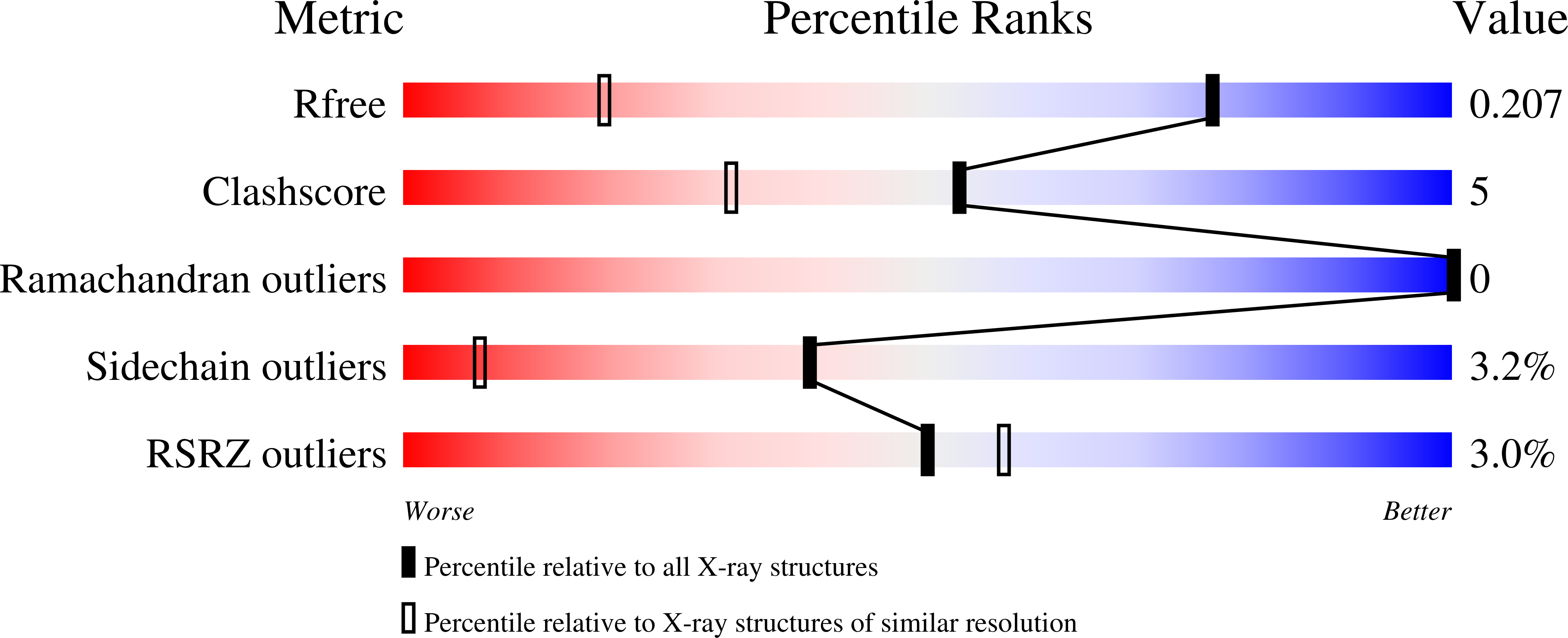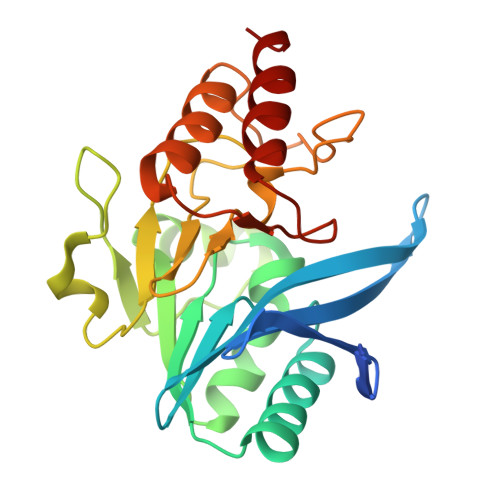Virtual screening identifies broad-spectrum beta-lactamase inhibitors with activity on clinically relevant serine- and metallo-carbapenemases.
Spyrakis, F., Santucci, M., Maso, L., Cross, S., Gianquinto, E., Sannio, F., Verdirosa, F., De Luca, F., Docquier, J.D., Cendron, L., Tondi, D., Venturelli, A., Cruciani, G., Costi, M.P.(2020) Sci Rep 10: 12763-12763
- PubMed: 32728062
- DOI: https://doi.org/10.1038/s41598-020-69431-y
- Primary Citation of Related Structures:
6TGD, 6TGI - PubMed Abstract:
Bacteria are known to evade ¦Â-lactam antibiotic action by producing ¦Â-lactamases (BLs), including carbapenemases, which are able to hydrolyze nearly all available ¦Â-lactams. The production of BLs represents one of the best known and most targeted mechanisms of resistance in bacteria. We have performed the parallel screening of commercially available compounds against a panel of clinically relevant BLs: class A CTX-M-15 and KPC-2, subclass B1 NDM-1 and VIM-2 MBLs, and the class C P. aeruginosa AmpC. The results show that all BLs prefer scaffolds having electron pair donors: KPC-2 is preferentially inhibited by sulfonamide and tetrazole-based derivatives, NDM-1 by compounds bearing a thiol, a thiosemicarbazide or thiosemicarbazone moiety, while VIM-2 by triazole-containing molecules. Few broad-spectrum BLs inhibitors were identified; among these, compound 40 potentiates imipenem activity against an NDM-1-producing E. coli clinical strain. The binary complexes of the two most promising compounds binding NDM-1 and VIM-2 were obtained at high resolution, providing strong insights to improve molecular docking simulations, especially regarding the interaction of MBLs with inhibitors.
Organizational Affiliation:
Department of Life Sciences, University of Modena and Reggio Emilia, Via Campi 103, 41125, Modena, Italy.



















